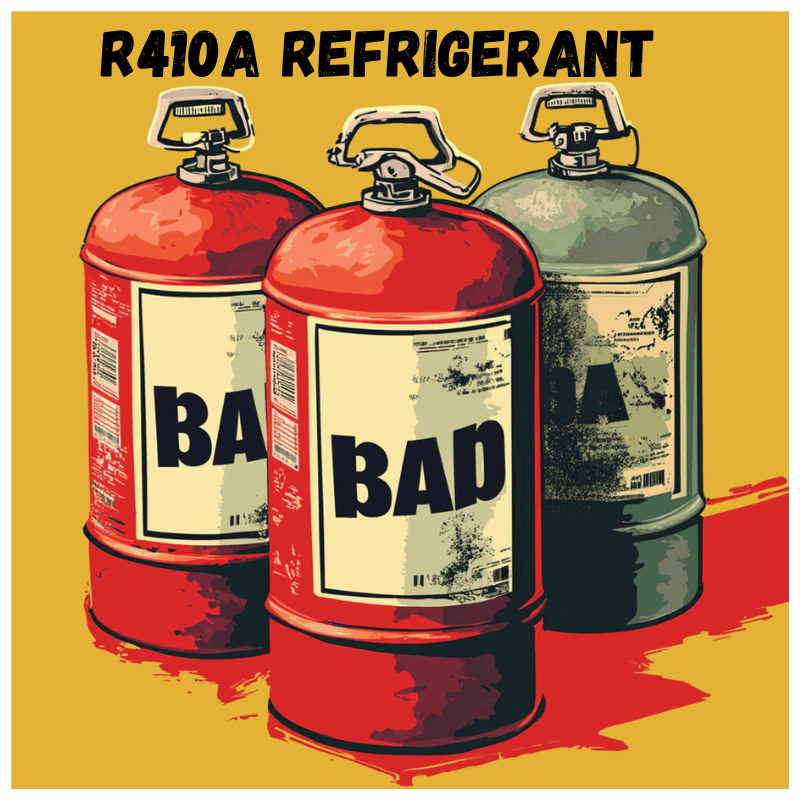In the evolving landscape of HVAC technology, making the right choice for your heating and cooling system is crucial for both environmental and economic reasons. Among the options available, R410A refrigerant units, once considered a significant upgrade from older refrigerants, are now increasingly seen as a less desirable choice. Here's why:
Environmental Impact
One of the most compelling reasons to reconsider R410A units is their environmental impact. Although R410A was initially hailed as an eco-friendlier alternative to R32 due to its lack of ozone-depleting chlorine, it is not without significant drawbacks. R410A has a high Global Warming Potential (GWP) of 2,088, meaning it is over 2,000 times more potent than carbon dioxide in terms of its greenhouse gas effect. As the world focuses more on reducing carbon footprints and combating climate change, the high GWP of R410A makes it a less attractive option.
Lower Efficiency
Efficiency is a key factor when choosing an HVAC system, and R410A units often fall short compared to newer alternatives. Modern refrigerants like R32 and R454B offer higher energy efficiency, which translates to lower energy bills and less strain on the power grid. The improved efficiency of these newer refrigerants also means better performance in varying temperatures, providing consistent comfort regardless of the weather.

Discover Top-Grade Air Conditioners: View Our Products Today
From an economic perspective, R410A units are becoming less appealing due to their higher operational and servicing costs. As the industry shifts towards more sustainable options, the cost of maintaining and repairing R410A systems is increasing. The phasedown of R410A production under international agreements like the Kigali Amendment to the Montreal Protocol is driving up prices for both the refrigerant itself and the components used in these systems.
Difficult and Expensive Servicing
Servicing R410A units is becoming increasingly challenging and expensive. Technicians require specialized training and equipment to handle this refrigerant safely. As the industry moves away from R410A, fewer technicians are being trained in its maintenance, leading to higher labor costs and longer wait times for repairs. This can be particularly problematic during peak seasons when HVAC systems are in high demand.
Poor Performance in High Heat
R410A units also struggle to perform efficiently in high temperatures. As global temperatures rise and heatwaves become more common, this limitation is a significant concern. Newer refrigerants are designed to maintain better performance in extreme conditions, ensuring that your home stays cool even during the hottest days of the year.
Blended Refrigerant vs. Single Compound
R410A is a blended refrigerant, composed of multiple chemical compounds. This can lead to issues with leakage and servicing, as the different components can separate over time, reducing the system's efficiency and effectiveness. In contrast, single-compound refrigerants like R32 do not have this issue, providing more consistent performance and easier handling during maintenance.
While R410A was once a leading choice in the HVAC industry, it is now clear that it falls short in several critical areas. From its significant environmental impact and lower efficiency to higher costs and servicing difficulties, R410A units are increasingly being viewed as outdated technology. As the industry moves towards more sustainable, efficient, and cost-effective alternatives, homeowners and businesses should consider newer refrigerants that better meet today's demands and future challenges. If you’re looking for an R32 product coming soon we suggest the Goodman 3 Ton 16.4 SEER2 R32 Air Conditioner Condenser.







